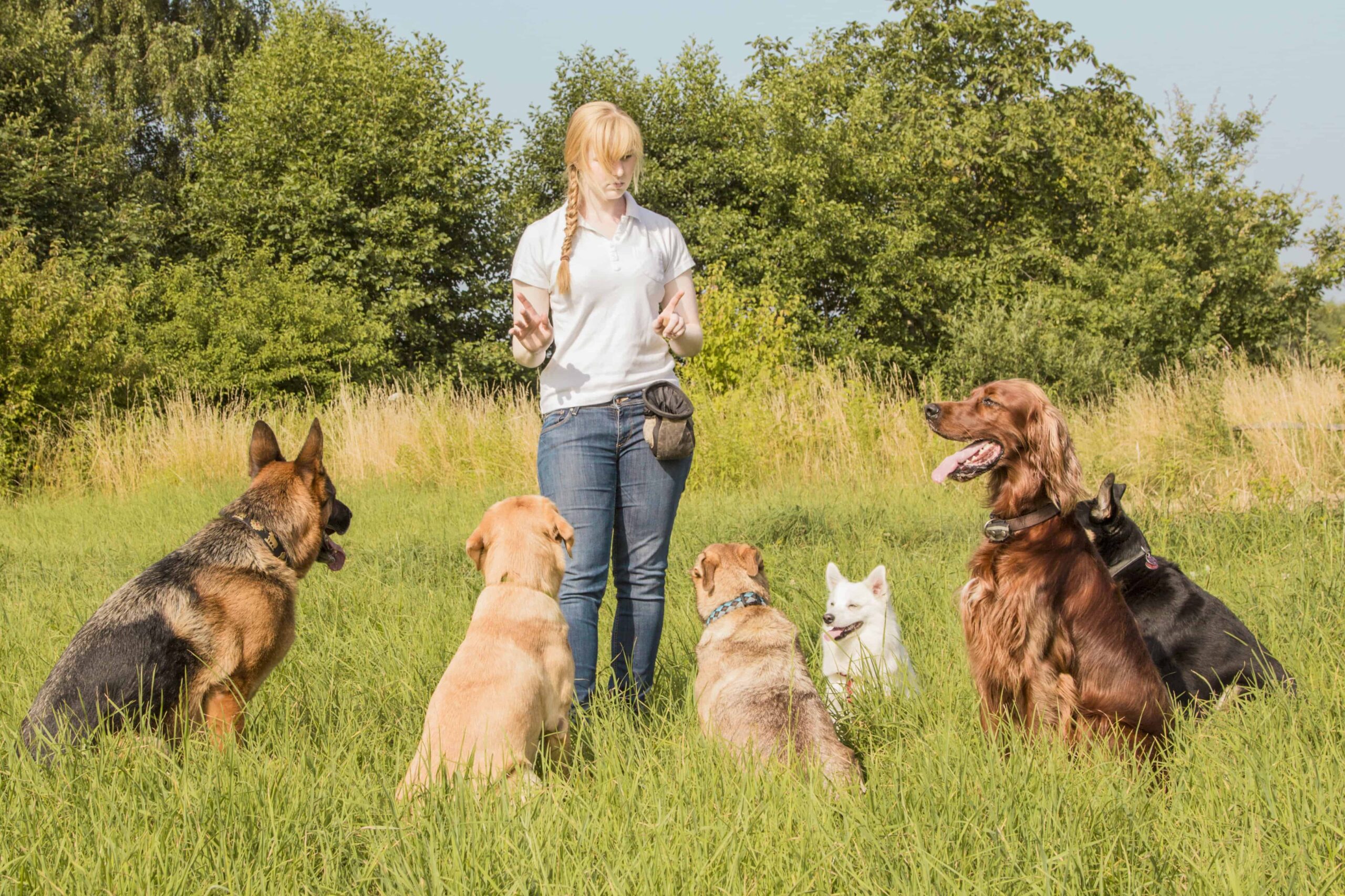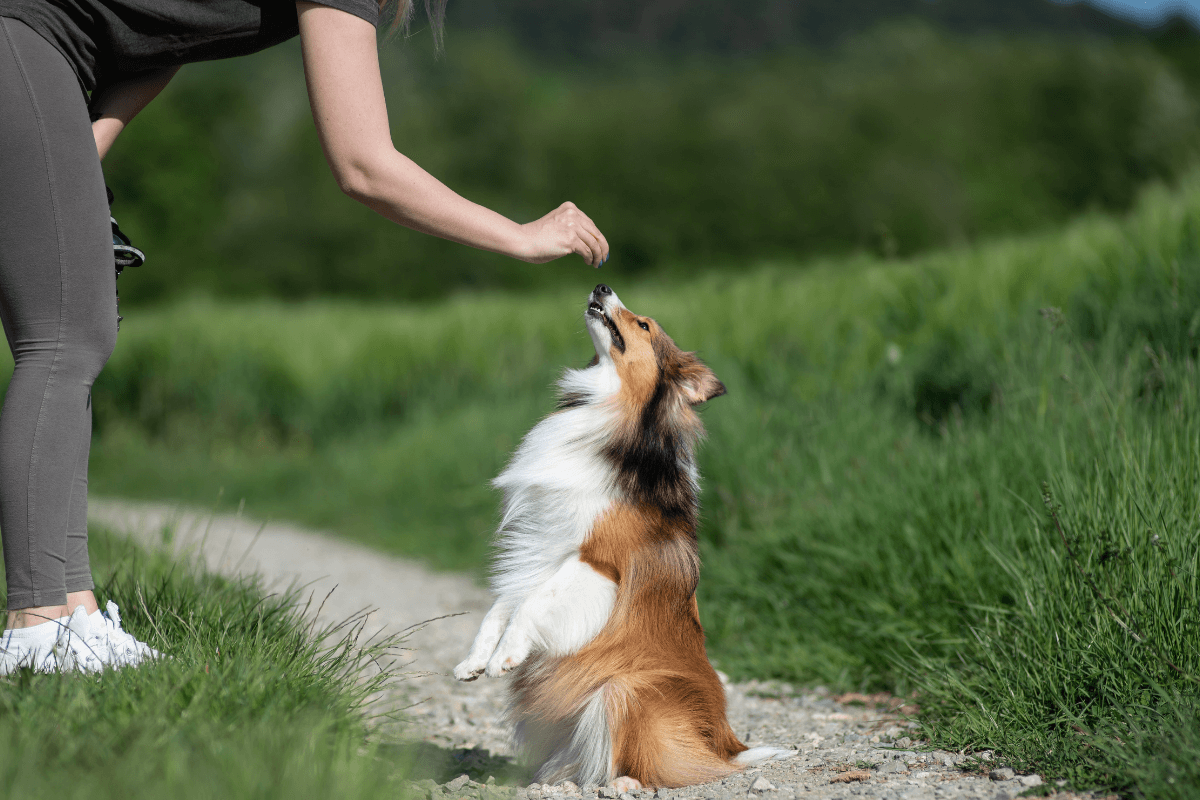Usual Behavioral Issues and Their Solutions in Dog Training
Usual Behavioral Issues and Their Solutions in Dog Training
Blog Article
Important Tips for Successful Dog Training: A Guide for Animal Owners
Effective canine training is a diverse process that calls for a calculated method customized to both the animal's character and the owner's goals. Understanding exactly how to browse these barriers can significantly improve the training experience, ultimately transforming the connection in between owner and pet dog.
Understanding Canine Behavior
Understanding pet actions is important for effective training and cultivating an unified partnership between pooches and their proprietors. dog training. Canines connect largely through body language, vocalizations, and actions, making it important for proprietors to translate these signals properly.

Socialization plays a substantial function in pet dog actions; direct exposure to various environments, individuals, and various other pets can significantly impact a pet's temperament. Additionally, elements such as type characteristics and individual character must guide training approaches, as some breeds may have particular behavior attributes that necessitate tailored approaches. By recognizing these components, proprietors can produce a supportive setting that motivates positive behavior, bring about effective training results and a deeper bond with their pets.
Establishing Regular Commands
Reliable communication with your pet begins with developing constant commands. This fundamental component of training is important for promoting understanding between you and your pet dog. Consistency in the commands you make use of guarantees that your pet can dependably link specific words or phrases with the preferred behaviors.
When picking commands, choose clear, distinctive words that are very easy to say and separate from one an additional. Stay clear of using similar-sounding commands that may puzzle your pet. As an example, making use of "rest" and "remain" is appropriate, but "sit" and "struck" can lead to misconceptions.
In addition, maintain the same tone and volume for each and every command. Dogs are delicate to singing signs, so differing your tone can produce confusion.
It is similarly important to make sure that all family participants are on the very same page regarding the commands made use of. A united front in command usage will certainly avoid combined signals and strengthen the understanding procedure.
Positive Reinforcement Strategies
The power of favorable reinforcement in canine training depends on its capacity to encourage desired habits with benefits and praise. This method is grounded in the concept that actions adhered to by beneficial results are more probable to be duplicated. By including positive support into your training regimen, you can properly form your dog's habits in a constructive manner.
To apply favorable reinforcement, it's essential to recognize what motivates your pet dog, whether it be treats, toys, or verbal praise. When your pet does a preferred activity, such as resting on command, immediately compensate them with a treat or love. This association between the command and the favorable end result reinforces their understanding.
It's critical to timing the incentives properly; providing the reinforcement within seconds of the wanted actions aids your pet make the connection (dog training). Additionally, uniformity is crucial-- make certain that all relative use the exact same commands and reward systems to stay clear of confusion

Progressively, you can minimize the frequency of treats as your pet learns the behavior, transitioning to applaud or intermittent incentives. This method not check this site out just fosters a solid bond between you and your canine but also promotes a favorable learning atmosphere, making training an enjoyable experience for both.
Socialization and Interaction
Continually subjecting your canine to a range of settings, individuals, and other animals is essential for their social advancement. Socialization should begin early, ideally during the crucial home window of 3 to 14 weeks, when puppies are most receptive to new experiences. Nevertheless, older dogs can likewise profit from continuous socialization initiatives.
Present your canine to various settings, such as parks, pet-friendly stores, and urban locations. This exposure helps them adjust to various stimuli, decreasing anxiousness and worry feedbacks. Motivate positive communications with other pets and people, guaranteeing that these experiences are secure and regulated to foster self-confidence.
Make use of structured playdates with well-mannered pet dogs, as this can enhance your dog's social skills and teach them proper actions. Obedience classes and training sessions likewise give superb possibilities for socializing, allowing your pet dog to connect with others in a supervised environment.
Display your pet dog's body movement throughout interactions, as this will certainly aid you evaluate their convenience level. Progressively raise direct exposure to more challenging scenarios while making certain that each experience is favorable. A well-socialized pet dog is most likely to show well balanced behavior, making them a joy to have in any setup.
Dealing With Usual Training Difficulties
Every canine owner will run into training challenges at some factor, no matter of their pet dog's age or socialization level. Recognizing common issues such as stubbornness, disturbances, and fearfulness can assist in establishing reliable strategies for enhancement.

Gradually introduce disturbances as the canine ends up being extra efficient in commands. Short, regular training sessions are likewise effective in preserving focus.
Fearfulness can prevent a pet dog's learning process. Steady desensitization to the resource of concern, coupled with click for source positive support, can assist ease anxiety. Perseverance is critical; never require a pet dog into a circumstance that causes distress, as this may intensify the concern.
Ultimately, understanding and addressing these typical obstacles with a structured technique will certainly promote an extra productive training experience, enhancing the bond in between canine and proprietor while advertising efficient knowing.
Conclusion
In summary, successful dog training relies upon a thorough understanding of canine behavior, the facility of regular commands, and the application of positive support techniques. Socializing plays a vital role in establishing well-adjusted pet dogs, while dealing with typical training obstacles requires patience and flexibility. By implementing these essential techniques, animal proprietors can foster a solid bond with their pets and advertise desirable habits, ultimately bring about an unified relationship in more tips here between human beings and their canine buddies.
Recognizing dog behavior is necessary for effective training and fostering a harmonious relationship between dogs and their proprietors.Socializing plays a significant role in dog actions; direct exposure to various environments, individuals, and various other pets can substantially affect a pet dog's personality.The power of positive support in dog training exists in its capacity to encourage desired actions via incentives and praise. By incorporating favorable support into your training regimen, you can efficiently form your pet's behavior in a positive fashion.
In recap, successful dog training depends on a comprehensive understanding of canine habits, the facility of constant commands, and the application of positive reinforcement techniques.
Report this page